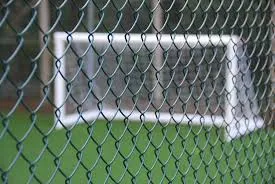Setting Up a Snow Fence A Comprehensive Guide
As winter approaches, many homeowners in snowy regions face the challenge of dealing with drifting snow. One effective solution to this problem is the installation of a snow fence. A snow fence works by creating a barrier that alters wind patterns, allowing snow to settle at desired locations and preventing accumulation in unwanted areas. This guide will provide you with everything you need to know about setting up a snow fence effectively.
Understanding Snow Fences
A snow fence is typically made from materials such as wood, plastic, or synthetic mesh. Its primary purpose is to control the flow of snow, directing it away from roads, driveways, and other key areas. The effectiveness of a snow fence can depend on several factors, such as its height, placement, and the prevailing wind direction in your area.
Choosing the Right Location
The first step in setting up a snow fence is selecting the location. Ideally, you want to position the fence at a distance from the area you want to protect, typically 20 to 50 feet away. This distance can vary based on local wind conditions and the type of fence you are using. Keeping the fence at least 15 to 20 feet from the edge of the roadway is crucial to avoid blocking visibility for drivers.
Pay attention to the prevailing wind direction when determining the orientation of your fence. If possible, align the fence perpendicular to the direction of the wind. This alignment will maximize the effectiveness of the fence in redirecting the snow.
Designing Your Snow Fence
Snow fences can vary in height and material. A fence that is at least 4 feet tall is generally effective for controlling snow drift. For homemade snow fences, slatted wooden fences—those with gaps to allow some wind to flow through—are often recommended as they reduce pressure buildup.
When it comes to material, wooden slats, plastic mesh, or wire fencing can all work well. Ensure that the chosen material is durable enough to withstand harsh winter conditions.
Installing the Snow Fence
setting up snow fence

To install your snow fence, follow these steps
1. Gather Materials You will need fence panels (wood, plastic, or mesh), posts (wooden or metal), and any necessary tools, such as a post-hole digger, nails, or screws.
2. Mark the Position Use stakes to mark where the fence will be placed. Double-check that it is at the correct distance from the areas you want to protect.
3. Dig Post Holes Use a post-hole digger to create holes for your fence posts. The holes should be at least 2 feet deep for stability.
4. Install Posts Place the posts in the holes and fill them with concrete or packed soil to secure them firmly in place.
5. Attach the Fence Panels Once the posts are secure, attach your fence panels or mesh to the posts using nails, staples, or ties.
6. Check for Stability Ensure that the entire structure is stable and can withstand the force of snow and wind.
Maintenance and Adjustments
After installing your snow fence, it’s essential to check it periodically, especially after severe storms. Look for any damage or instability in the fence and make necessary repairs. It may be required to adjust the fence's position if the direction of winter storms changes in subsequent years.
Conclusion
Setting up a snow fence can be a proactive measure to manage snow accumulation effectively. By carefully considering the location, design, and installation of your snow fence, you can significantly reduce the challenges posed by drifting snow. Not only will this enhance safety on roads and driveways, but it will also simplify winter maintenance around your property. With the right approach, your snow fence can provide reliable protection for years to come, allowing you to enjoy the beauty of winter without the hassles that come with it.
















